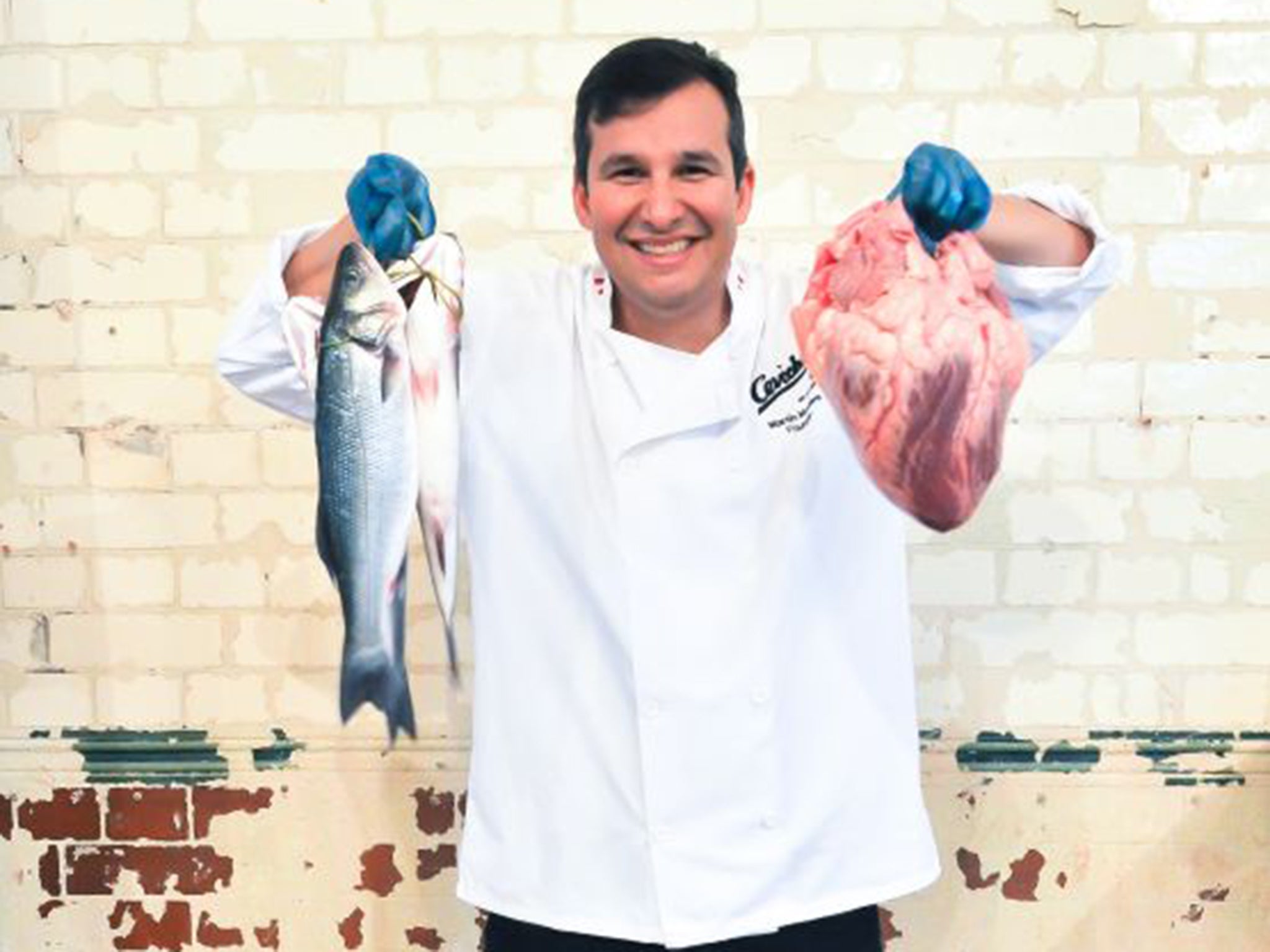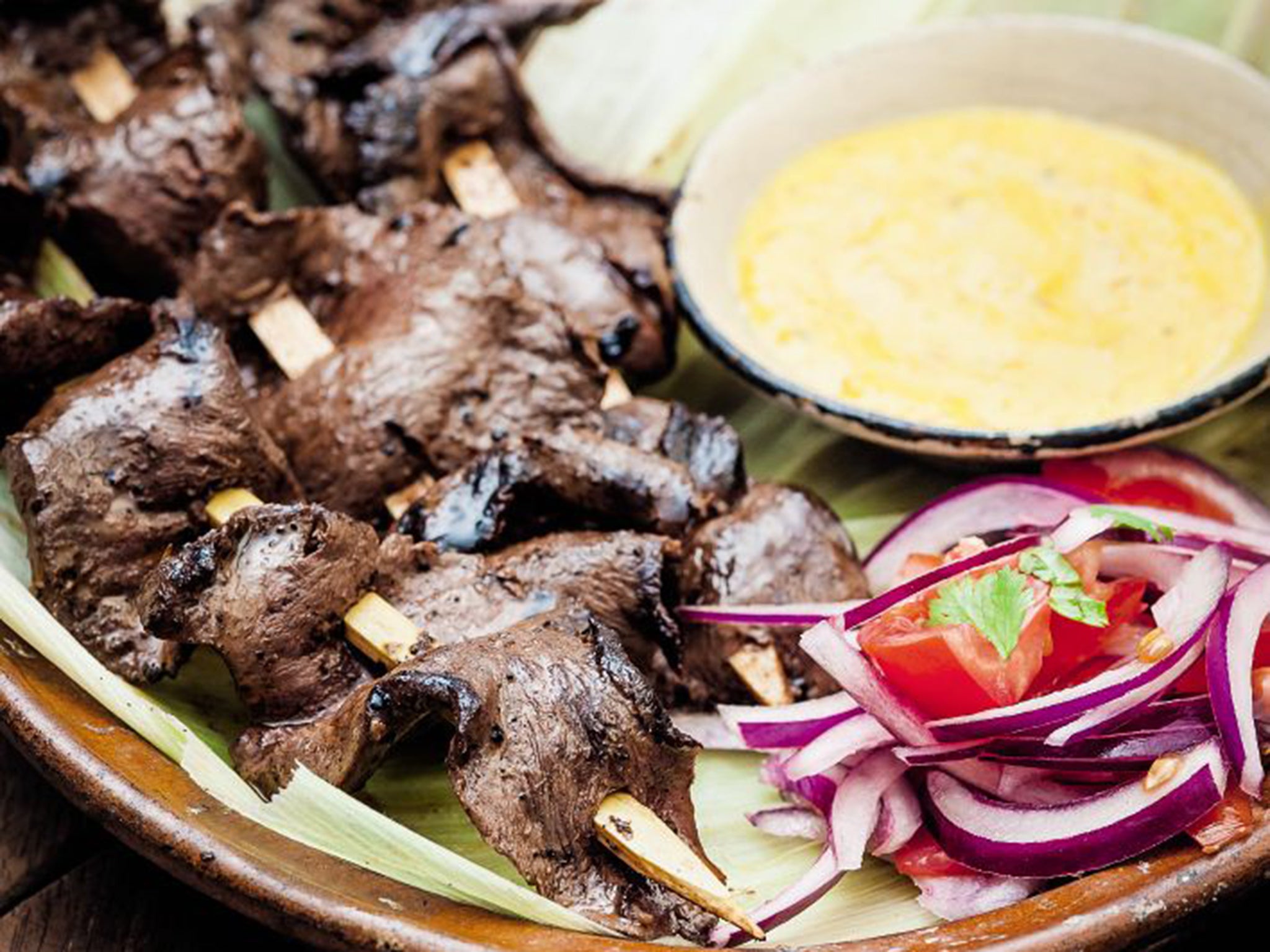The lost art of eating heart: Cardiac cuisine is muscling in on the nose-to-tail menu
We've learnt to love offal again, but cardiac cuisine is something most British diners still steer clear of. Yet other cultures embrace this succulent meat – and you can even buy lambs' hearts in Waitrose. So let's stop being squeamish and tuck in, says Anthea Gerrie

Your support helps us to tell the story
From reproductive rights to climate change to Big Tech, The Independent is on the ground when the story is developing. Whether it's investigating the financials of Elon Musk's pro-Trump PAC or producing our latest documentary, 'The A Word', which shines a light on the American women fighting for reproductive rights, we know how important it is to parse out the facts from the messaging.
At such a critical moment in US history, we need reporters on the ground. Your donation allows us to keep sending journalists to speak to both sides of the story.
The Independent is trusted by Americans across the entire political spectrum. And unlike many other quality news outlets, we choose not to lock Americans out of our reporting and analysis with paywalls. We believe quality journalism should be available to everyone, paid for by those who can afford it.
Your support makes all the difference.It was one of those moments that closes a generation gap. Recoiling slightly from a proffered skewer of ox hearts at a reception in a Lima country club – who would want to chow down on this most visceral and recognisable of organs? – I suddenly had a flashback to childhood and the tiny heart served up to me like a precious jewel by my mother in the Friday night chicken soup.
I loved that dense, meaty little chicken heart, so why not ox? I bit into my skewer and became an instant fan, like the thousands of Brits who have embraced Peruvian food at its most essential in these "anticuchos", the national snack. Not to mention the foodies ordering duck hearts from French butchers and the aficionados who buy lambs' hearts from Waitrose and Middle Eastern butchers or order sliced beef hearts from Tesco online.
Hearts, it turns out, are pretty well universally beloved. They are big in Brazil, Japan, Italy, France and Denmark and have made it to the highest echelons of Spanish cuisine, with pigeon heart featuring in a signature dish at El Celler de Can Roca, which reclaimed its crown as number one in The World's 50 Best Restaurants earlier this month.
So what do they actually taste like? Think a milder version of the beast from which they come, with, in most cases, a texture not unlike the flesh. Ox hearts, as the beef variety are more commonly known, could be mistaken for a lean steak when flash-fried, while the same treatment for lamb hearts would make you think you were eating the liver. Chicken and duck hearts are sweet, succulent and firmly textured, like a rich distillation of the essence of the bird.
In London, ox hearts are a menu staple at Ceviche, where founder and Peruvian food champion Martin Morales says that, in spite of their origins as the food of African slaves, they are enjoyed by every echelon of society: "We cut them into cubes and marinate with vinegar, cumin and smoked panca chilli, then grill them. I use a recipe inspired by La Tia Grimanesa, an old lady and anticucho 'master' who used to sell them off a cart in Lima."
And they are also a hot seller off the Tongue'N Cheek truck, which rolls around London serving Heartbreakers, made with half-and-half minced rare breed beef and ox heart served on an artisan bun with cheddar and chimichurri: "So juicy it will spray you with your first bite!" says owner Cristiano Meneghin, who was inspired by the nose-to-tail ethos of his native Italy. But it's not just a London thing – all over Scotland hearts are consumed minced in haggis, and Tom Kitchin showcases many different kinds at his Michelin-starred restaurant in Edinburgh: "I've used roe deer, rabbit, lamb and duck and I'm currently using the heart of a Scottish-reared wagyu cow, which is so rich and delicious."
The fact that hearts are cheap – Tesco charges £3.50 a kilo for beef hearts, Waitrose less than £6 a kilo for lamb hearts – has not prevented them from turning up on high-class menus in London: at Clerkenwell restaurant St John, but also at Nobu and at Wild Honey and Arbutus, where chef-owner Anthony Demetre just can't get enough of the dish he grew up with. "My father is Greek, and we would have lamb hearts stuffed with a traditional dolmades-type filling of onions, rice and tomatoes." He serves not only lamb hearts, but ox, which he is dishes up with grilled asparagus, baby leeks and anchovy vinaigrette, and duck, which he likes to spear with chorizo on a skewer of crisp spaghetti.
Dale Osborne, who recently moved from the fashionable Chiltern Firehouse to Terroirs in Covent Garden, has been chowing down on anticuchos regularly since marrying a Peruvian: "I became a sucker for them – they're the best." Although he didn't serve them at the Firehouse, he did get involved with duck "umbles" at Dinner by Heston, and has been inspired by trips to France to experiment with hearts for the French-inspired menu at Terroirs.
"They were eating them all over the place," says Osborne, who has been serving duck hearts sautéed with mousseron mushrooms and wild dandelions and a fry-up of chicken hearts and chicken livers, another French favourite. "In Paris, I had duck hearts on skewers with pickled shallots, and in Beaune it was quail hearts. I'm sure I've had pigeon hearts in France, too."
Yet although Osborne insists hearts are not "offally", over in London's Shoreditch, hipsters are clearly not persuaded, as Louis Solley of Jago has had to take them off the menu. "They're the chefs' choice, but I think customers have a real problem with eating hearts and brains – they seem to think those are parts that shouldn't be consumed."

However, Ben Tish of the Salt Yard group says that while he would have struggled to get clients eating hearts a couple of years ago, now they embrace them: "People are surprised at how much like a lean steak they taste, but they can only be cooked very quickly or slow-braised – there's no in-between. We'll grill duck hearts rare and serve on a rosemary skewer with red chile aioli at Opera Tavern and marinate goat's hearts before cooking over charcoal at Ember Yard. "
So how should the bold among us prepare hearts for the pot at home? Carefully, is the answer from Max Clark of Leiths, who feels the slow treatment is safest for novices approaching the organs of the larger beasts. "I grew up with lambs' hearts as a weekly treat, when it was Paxo that went into my mother's stuffing. Now I sweat chopped onions with brioche crumbs and sage to make a farce and fill the cavity after cleaning out the heart strings and the top bit of aorta. You can rinse them, but I prefer the gutsier taste you get by leaving the blood in. After cleaning and stuffing, I brown and braise them in wine and water on a bed of vegetables for at least two hours. The only thing you have to remember is never to let the hearts come to the boil in the braising liquid – if you do, they will toughen up into tight little fists."
While Clark likes to sauté duck hearts simply with a splash of balsamic vinegar, Drogo Montagu of supplier Fine Food Specialist prefers to melt them into a risotto – "they are so creamy" – or briefly pan-fry to serve rare on crostini.
And much, much more: "Anything you can do to an oyster, you can do to a duck heart," he enthuses. "Try coating them in panko breadcrumbs, deep-frying them and serving them with a beurre blanc – delicious."
It may be unlikely that hearts in breadcrumbs will ever join the rest of the deep-fried menu that seems to hold a special place in so many Britons' affections, but who knows? Perhaps KFC should take note.
Join our commenting forum
Join thought-provoking conversations, follow other Independent readers and see their replies
Comments